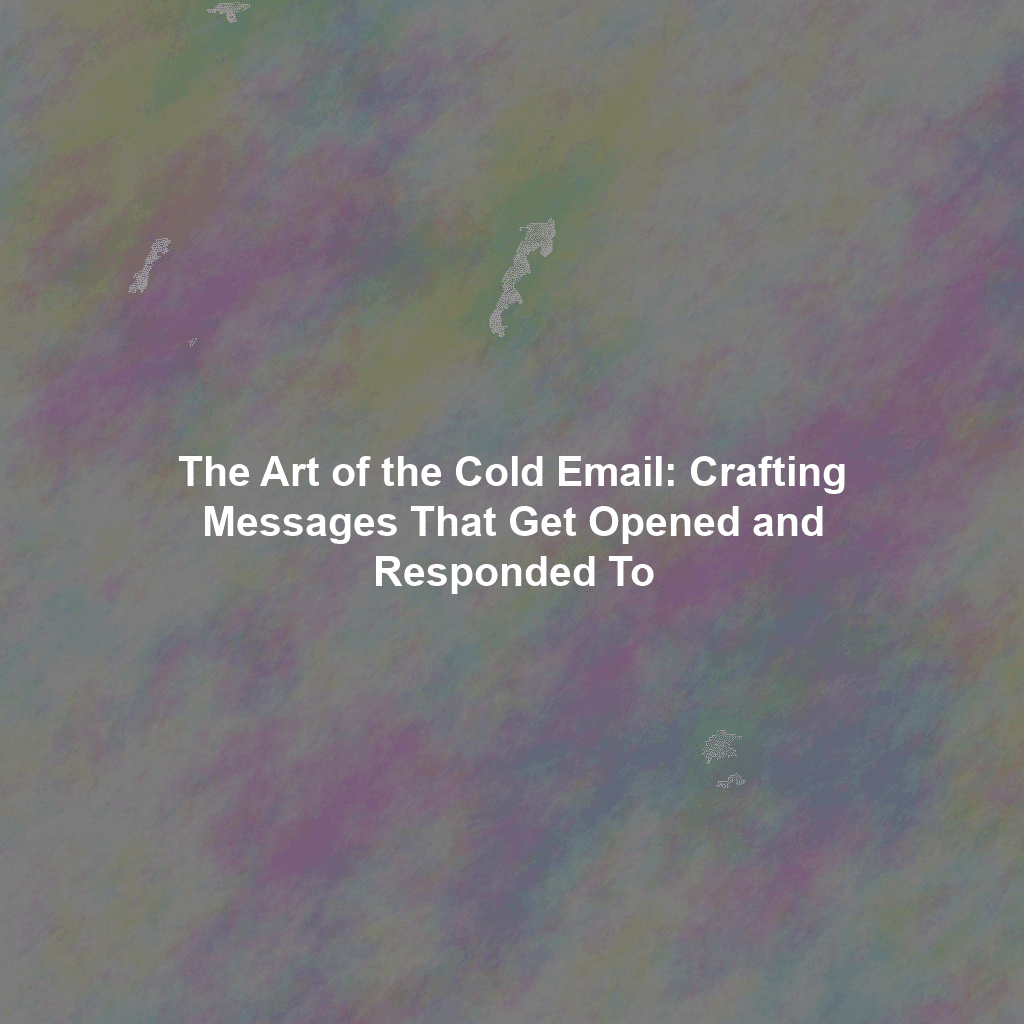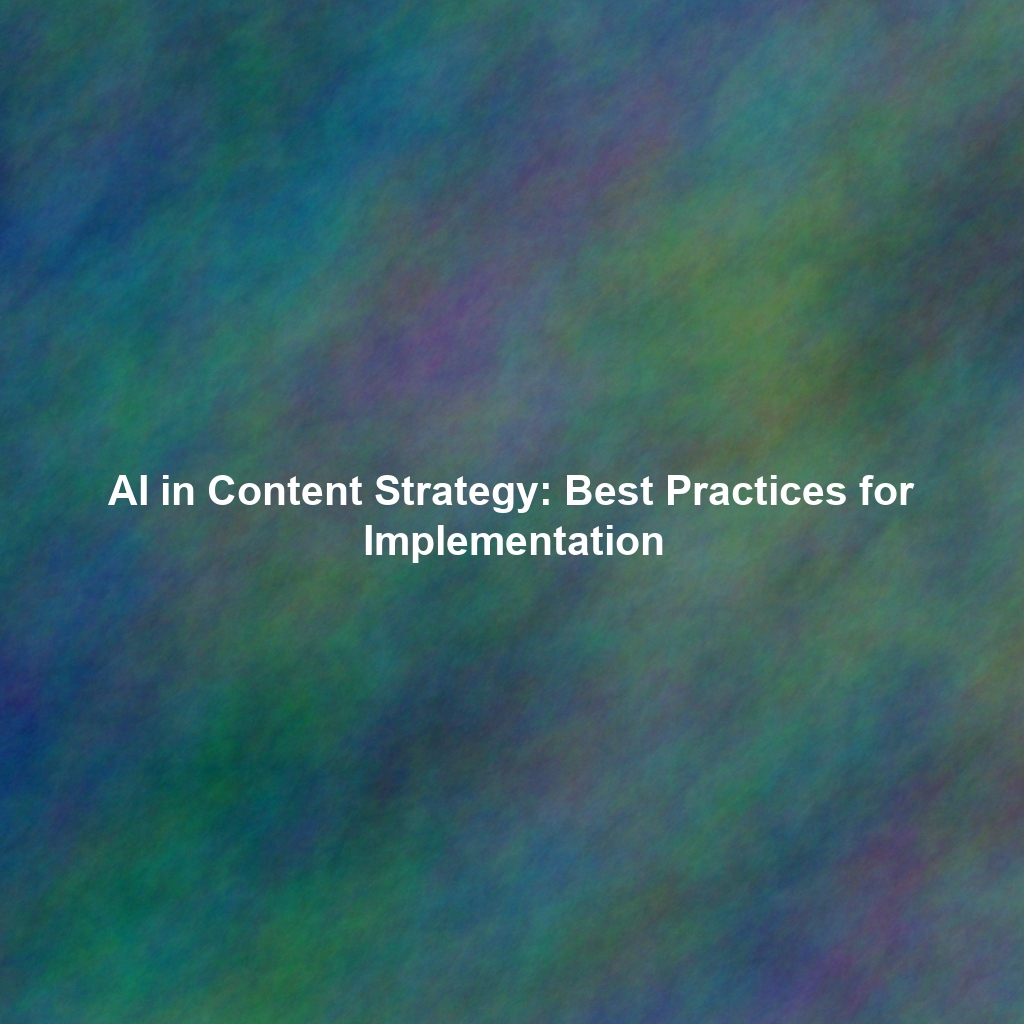Why Cold Emailing is Still a Potent Growth Hack (When Done Right)
You might be thinking, “Cold emailing? Isn’t that dead, a relic of a bygone era?” The truth is, cold emailing is far from deceased. It has simply evolved, shedding its spammy past. The old tactics of mass, impersonal email blasts are indeed obsolete and counterproductive. The new game is all about **personalization at scale**, leveraging data and insights to make each email feel like a bespoke message. When executed strategically and ethically, cold emailing remains an incredibly powerful tool because:
- It’s Proactive & Direct: You’re not passively waiting for leads to come to you through inbound channels; you’re actively identifying and reaching out to specific individuals and companies that perfectly align with your ideal customer profile (ICP) or strategic partnership criteria. This directness can significantly shorten sales cycles.
- It’s Hyper-Targeted & Precise: Unlike broad advertising, cold emailing allows for surgical precision. You can pinpoint specific decision-makers within target organizations, ensuring your message lands directly with the person who has the authority and need for your solution. This reduces wasted effort and increases conversion potential.
- It’s Cost-Effective & Scalable: Compared to many other marketing channels (e.g., paid ads, events), cold emailing can offer a remarkably high return on investment (ROI) when factoring in the cost of tools and human effort. Modern automation tools allow for personalization at scale, making it efficient even for larger outreach campaigns.
- It’s Highly Measurable & Optimizable: You can meticulously track every key metric: open rates, click-through rates, reply rates, and conversion rates. This rich data allows for continuous A/B testing and optimization of subject lines, opening lines, body copy, and calls to action, constantly refining your approach for improved performance.
- It Builds Relationships: When done correctly, a cold email isn’t just a transaction; it’s the first step in building a genuine business relationship. By demonstrating research and offering value, you establish credibility and trust, which are foundational for future collaboration.
- It Unlocks Hidden Opportunities: Sometimes, the best leads or partners aren’t actively searching for your solution. Cold emailing allows you to tap into these latent needs, creating demand where none explicitly existed, or uncovering synergistic opportunities.
The Data-Driven Advantage
A well-executed cold email campaign can achieve open rates of 20-30% and reply rates of 5-10%, far surpassing generic email marketing benchmarks. This performance is directly attributable to the level of personalization and relevance achieved, translating into a lower Cost Per Acquisition (CPA) for new leads or customers.
Unlocking the Secrets: Key Elements of a Successful Cold Email (The Anatomy of a Breakthrough)
So, how do you craft a cold email that actually gets opened, read, and, more importantly, responded to? It’s a delicate balance of art and science, requiring meticulous attention to detail and a deep understanding of human psychology. Here’s the breakdown, from the first glance to the final call to action:
1. The Subject Line: The Gatekeeper to Attention (Your 3-Second Window)
Your subject line is the first (and often only) impression. It needs to be compelling enough to cut through the noise of a crowded inbox and entice the recipient to open the email. This is where we get a little unconventional, leveraging curiosity and hyper-personalization:
- Hyper-Personalize with Precision: “[Recipient Name], a quick question about [Specific Project/Company Name]” is far more effective and intriguing than “Reach out about business opportunity.” This immediately signals relevance.
- Intrigue and Curiosity (Ethically): “Saw what you did with [Recent Achievement] – impressed!” creates a sense of anticipation and makes the recipient wonder, “Who is this, and what did they see?”
- A Touch of Humor (Use Sparingly & Appropriately): “Don’t worry, this isn’t another generic email” (only if your email genuinely delivers on that promise and aligns with your brand’s tone!). Humor can break the ice but can also backfire if misused.
- Direct & Benefit-Oriented (for high-intent): “Idea for [Company Name] to [Achieve Specific Benefit]” can work if you have a genuinely valuable, concise idea.
- Avoid Clickbait & Deception: False promises, misleading claims, or overly aggressive sales language in the subject line will destroy your credibility and lead to immediate deletions or spam reports. Authenticity starts here.
- Keep it Concise: Aim for 4-7 words, or around 30-50 characters, as many inboxes truncate longer subject lines, especially on mobile.
2. The Opening Line: Hook Them Immediately (Demonstrate Your Research)
You’ve successfully compelled them to open the email; now you need to keep them reading. The opening line is crucial – you have mere seconds to prove this isn’t a generic blast. Don’t waste it on bland introductions or self-promotion. Get straight to the point and immediately demonstrate that you’ve done your research and understand their world:
- Reference Something Specific & Recent: “I noticed your recent blog post on [Specific Topic] and particularly appreciated your point about [Specific Detail/Insight].” This shows you’ve genuinely engaged with their content.
- Compliment Genuinely & Specifically: “Your company’s innovative work on [Recent Client/Project] is truly impressive; the [Specific Aspect] is especially impactful.” Generic compliments are easily dismissed.
- Find a Mutual Connection or Shared Experience: “I saw you’re connected with [Mutual Contact] on LinkedIn, and they spoke highly of your work at [Company].” Or, “As a fellow Dartmouth alum, I’ve been following your career path with interest…”
- Address a Known Pain Point: “I understand that [Industry Challenge] can be a major hurdle for businesses like yours, especially when it comes to [Specific Consequence].” This immediately establishes empathy and relevance.
3. The Body: Value, Relevance, and Brevity (The Core Proposition)
This is where you articulate your value. Keep your message concise, clear, and laser-focused on the recipient’s needs, not your own. Nobody wants to read a wall of text in a cold email. Focus on providing tangible value and demonstrating *how* you can help them achieve their goals or solve their problems:
- Highlight Their Pain Points (Reiterate & Validate): “I understand that [Industry Challenge] can be a major hurdle for businesses like yours, particularly when it impacts [Specific Metric/Outcome].” This shows you’ve done your homework.
- Offer a Solution (Without Being Overtly Salesy): “My team specializes in [Your Expertise/Solution] and has helped companies like [Similar Company or Industry Peer] overcome this exact challenge by achieving [Specific, Quantifiable Results, e.g., ‘reducing costs by 15%’ or ‘increasing lead generation by 20%’].” Focus on the *outcome* for them.
- Keep it Short and Sweet: Aim for 5-7 sentences, divided into short paragraphs. Respect their time. If it’s longer, it won’t get read.
- Focus on Benefits, Not Features: Explain *how* your product or service will improve their specific situation or solve their problem, rather than just listing what it does. Connect your solution directly to their stated or implied needs.
- Provide Social Proof (Concise): Briefly mention a relevant client or a compelling statistic that validates your claims, but don’t overwhelm them.
4. The Call to Action (CTA): Make it Easy to Respond (The Next Logical Step)
This is where you tell the recipient exactly what you want them to do next. The goal is to make it incredibly easy for them to take that next, low-friction step. Avoid ambiguity.
- Be Specific & Low-Commitment: “Would you be open to a quick 15-minute call next week to discuss this further?” Or, “Would you be open to a brief 10-minute chat to see if there’s a fit?”
- Offer Options (if appropriate): “If you’re interested in learning more, I’ve attached a brief case study. Alternatively, I’m happy to schedule a brief call at your convenience.”
- Remove All Friction: Include a direct link to your calendar scheduling tool (e.g., Calendly, Chili Piper) to eliminate back-and-forth emails.
- Avoid Generic, Vague CTAs: “Let me know what you think” or “Get in touch” are weak and rarely elicit a response. Be direct and propose a clear next step.
- Suggest a Specific Time (if appropriate): “Would Tuesday at 2 PM PST work for a quick chat?” This makes it easier for them to simply reply “Yes” or propose an alternative.
5. The “Weird Factor”: Adding the Unconventional Twist (Memorable & Differentiating)
This is where we truly get into growth hacking territory – the element that makes your email truly memorable and helps it stand out from the deluge of conventional outreach. Use these ideas sparingly and only if they genuinely fit your brand and the recipient’s likely personality. Authenticity is still key, even with “weirdness.”
- Send a Personalized Video Message: Use a tool like Loom or Vidyard to record a short (30-60 second), personal message addressing them by name, referencing your research, and briefly stating your value proposition. This builds immediate rapport and trust.
- Reference a Recent Social Media Post or Public Comment: “I saw your recent tweet about [Specific Topic] and thought you might find this [Resource] interesting.” This shows you’re paying genuine attention to their online presence and interests.
- Include a Relevant Meme or GIF (Use with Extreme Caution): A well-placed, genuinely funny, and highly relevant meme or GIF can add personality and humor, making your email memorable. However, this is risky and should only be used if you are confident in your understanding of the recipient’s tone and industry. Misuse can be disastrous.
- Offer a Truly Unique and Valuable Resource (The “Gift”): This could be a free audit of their current strategy, a custom report analyzing their market, a piece of exclusive research, or a template you’ve developed. This is a “give before you get” strategy that builds goodwill.
- “The Compliment Sandwich” (But Make it REAL): Start with a genuine, specific compliment. Follow with your concise value proposition. End with another genuine, specific compliment. The key is that all compliments must be authentic and based on real research.
- A Bold, Yet Respectful, Opening: “I’m probably going to be the only person to email you about this today…” (followed by something genuinely unique and valuable). This sets an immediate, intriguing tone.
Anecdote: The SaaS Founder’s Video Breakthrough
Sarah, a founder of a new B2B SaaS platform, was struggling to get meetings with busy VPs of Marketing. Instead of standard emails, she started recording personalized 45-second Loom videos. In each video, she’d address the VP by name, briefly highlight something specific she admired about their company’s recent campaign, and then concisely explain how her software could solve a specific pain point she’d identified on their website. Her reply rate jumped from 3% to 18%, and her meeting booking rate quadrupled. “It felt like I was walking into their office and talking to them directly,” she said. “The personal touch was undeniable.” This demonstrates the power of breaking through the digital noise with a truly human element.
Tools to Supercharge Your Cold Emailing Efforts (Scaling Precision)
While the principles of effective cold emailing are essential, the right tools can help you scale your efforts, automate repetitive tasks, and meticulously track your results, turning a manual process into an efficient growth engine.
- Email Finders & Verification Tools:
- Hunter.io, Skrapp.io, Apollo.io: These tools help you find verified email addresses for individuals at target companies.
- NeverBounce, ZeroBounce: Crucial for verifying email addresses to ensure deliverability and protect your sender reputation.
- Email Outreach & Automation Platforms:
- Mailshake, Lemlist, Woodpecker: These platforms allow you to send personalized email sequences, automate follow-ups, track open rates, click-through rates, and reply rates, and manage your outreach campaigns at scale. They are designed to make cold emailing efficient.
- Personalization & Data Enrichment Tools:
- Reply.io: Offers robust features for personalizing emails, automating outreach, and integrating with CRM systems.
- Google Sheets with Mail Merge add-ons: A simple, cost-effective way to customize emails at scale using data from a spreadsheet.
- Clearbit, ZoomInfo: Data enrichment tools that provide additional insights about prospects (e.g., company size, industry, technology stack) to further personalize your outreach.
- Video Recording & Embedding Tools:
- Calendar Scheduling Tools:
- Calendly, Chili Piper: Integrate these to allow recipients to book meetings directly from your email with a single click, eliminating friction.
Measuring Success: Key Performance Indicators (KPIs) for Cold Email Campaigns
To truly understand the impact of your cold email efforts and continuously optimize for better results, tracking the right metrics is paramount. Don’t just look at vanity metrics; focus on those that provide actionable insights into your campaign’s effectiveness and contribution to your sales pipeline.
- Deliverability Rate: The percentage of emails that successfully reach the recipient’s inbox (not bounced or sent to spam). This is foundational.
- Open Rate: The percentage of recipients who open your email. This indicates the effectiveness of your subject line and sender reputation. Aim for 20-30% or higher.
- Click-Through Rate (CTR): The percentage of recipients who click on a link within your email. This measures the effectiveness of your email body and call to action.
- Reply Rate: The percentage of recipients who send a direct reply to your email. This is a critical engagement metric, indicating genuine interest and the start of a conversation. Aim for 5-10% or higher.
- Meeting Booked Rate: The percentage of recipients who book a meeting or demo as a direct result of your email. This is a key conversion metric for sales outreach.
- Lead Conversion Rate: The percentage of emails sent that ultimately result in a qualified lead or a closed-won deal. This is the ultimate measure of your campaign’s business impact.
- Cost Per Lead (CPL) / Cost Per Acquisition (CPA): The total cost of your cold emailing efforts divided by the number of leads or customers acquired. This determines the efficiency of your outreach.
- Unsubscribe Rate / Spam Complaint Rate: Monitor these closely. High rates indicate your emails are perceived as irrelevant or spammy, harming your sender reputation.
Regularly analyze these metrics, conduct A/B tests on different elements of your email (subject lines, opening lines, CTAs), and iterate based on the data. This continuous optimization is what transforms cold emailing from a hit-or-miss tactic into a predictable growth engine.
Common Pitfalls to Avoid: Ensuring Your Cold Emails Land & Convert
While hyper-personalization offers immense potential, mistakes can still derail your cold email efforts. Avoid these common pitfalls to ensure your campaigns deliver optimal results and protect your sender reputation:
- Lack of Genuine Personalization: The biggest mistake. Generic “personalization” (e.g., just using their first name) without real research is immediately obvious and signals low effort.
- Ignoring Email Deliverability: Sending emails to unverified addresses or having high bounce rates will severely damage your sender reputation, leading to your emails consistently landing in spam folders. Use email verification tools.
- Overly Salesy or Aggressive Tone: Cold emails are for starting conversations, not closing deals. An overly aggressive or pushy tone will immediately turn off prospects. Focus on value, not sales.
- Too Long or Too Much Information: Respect their time. Long emails with too much information or too many links will not be read. Be concise and get to the point quickly.
- Weak or Ambiguous Call to Action: Don’t make them guess what you want. A vague CTA leads to no action. Be specific and low-commitment.
- Lack of Follow-Up Strategy: Most deals are not closed on the first touch. A well-planned, value-driven follow-up sequence (2-5 emails) is crucial for success.
- Poor Subject Line: A generic, spammy, or misleading subject line will result in low open rates, regardless of how good your email body is.
- Not Testing & Optimizing: Relying on intuition rather than data will lead to suboptimal performance. Continuously A/B test and analyze your KPIs to refine your approach.
- Ignoring Legal & Ethical Guidelines: Be aware of and comply with relevant email marketing regulations (e.g., CAN-SPAM, GDPR) and ethical best practices.
- Focusing on Quantity Over Quality: Sending thousands of generic emails is less effective than sending hundreds of hyper-personalized, high-quality emails. Quality always trumps quantity in cold outreach.
Conclusion: Cold Emailing as a Strategic Conversation Starter, Not a Sales Pitch
The key to successful cold emailing in today’s digital age is to fundamentally approach it as a way to start a meaningful conversation, not to close a deal on the first touch. It’s about demonstrating genuine interest, providing clear value, and building relationships based on mutual respect and understanding of needs. By embracing meticulous personalization, unwavering relevance, and a strategic touch of the unexpected, you can transform your cold emails from ignored messages into powerful growth engines that open doors to new leads, partnerships, and opportunities.
So, ditch the generic templates, invest in the research, embrace the “weird” (responsibly!), and start crafting cold emails that actually get opened and responded to. You might be surprised by the profound, measurable results that this precision-driven outreach can deliver for your business. It’s a testament to the power of human connection, even in a digital world.
 Skip to content
Skip to content

